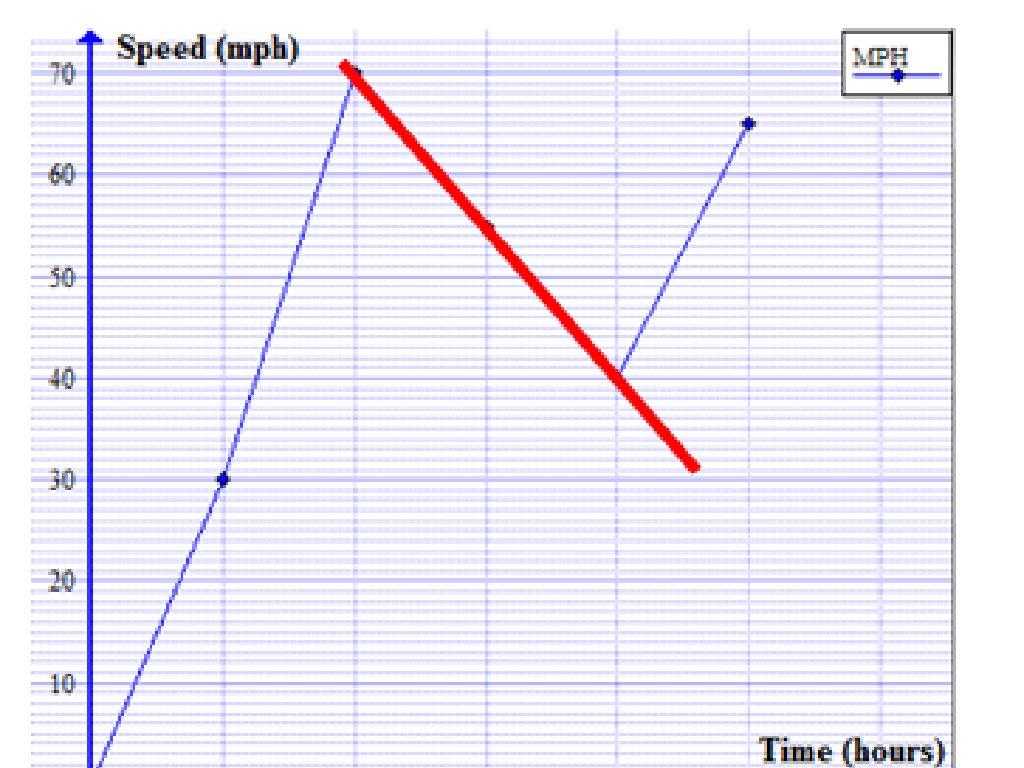Antebellum Period: Economies Of The North And South
Subject: Social studies
Grade: Fourth grade
Topic: Early 19Th Century American History
Please LOG IN to download the presentation. Access is available to registered users only.
View More Content
Exploring the Antebellum Period
– What was the Antebellum Period?
– Time before the Civil War, from 1812 to 1861
– Differences between North and South
– North: Industrial growth, South: Agriculture & slavery
– Impact on American history
– Tensions from economic differences led to Civil War
– Key industries in 1800s America
– North: Factories & textiles, South: Cotton & plantations
|
The Antebellum Period is a significant era in American history, marking the time before the Civil War. It’s important for students to understand the stark differences between the Northern and Southern states during the 1800s, particularly in terms of their economies and social structures. The North was characterized by rapid industrialization and urbanization, while the South remained largely agricultural, relying heavily on slave labor for its cotton plantations. These economic disparities contributed to the growing tensions between the regions, ultimately leading to the Civil War. Discuss the key industries that defined each region’s economy and how these differences shaped the course of American history. Encourage students to think about how the lives of people, including children their age, would have differed between the North and South during this period.
Exploring the Antebellum Period
– What is the Antebellum Period?
– A time in history before the Civil War, known for its unique culture and economy.
– Timeframe: Before the Civil War
– This period lasted from the early 1800s up to 1861.
– Cultural overview of the era
– The era was marked by distinct music, clothing, and social norms.
– Economic differences North vs South
– The North had factories and industry, the South had farms and plantations.
|
The Antebellum Period is an important era in American history, spanning the early 19th century up until the Civil War in 1861. It’s known for its distinct cultural identity, with unique music, fashion, and social customs. Economically, the North and South were very different: the North was industrialized with factories and businesses, while the South’s economy was based on agriculture, with large farms and plantations. Understanding these differences is key to comprehending the social and political tensions that eventually led to the Civil War. Encourage students to think about how the different economies could lead to different ways of life and viewpoints.
The Northern Economy During the Antebellum Period
– Birth of the Industrial Revolution
– A major change where machines replaced hand tools, and goods were produced faster.
– Rise of factories and cities
– Factories led to the growth of big cities as people moved for jobs.
– Immigration boosts workforce
– Many people came from other countries to work in American factories.
– Workers’ life in the North
– Workers often faced long hours and tough conditions for little pay.
|
This slide introduces students to the economic transformation in the Northern United States during the Antebellum Period, marked by the Industrial Revolution. Emphasize the shift from handcrafted goods to machine production and how this led to the growth of factories and urban areas. Discuss the role of immigrants in the labor force and how their arrival provided the manpower needed for the expanding industries. Highlight the living and working conditions of the workers to give students a sense of the human impact of industrialization. Use examples like the textile mills in Massachusetts and the growth of cities like New York and Philadelphia to illustrate these points.
The Southern Economy During the Antebellum Period
– Agriculture dominated the South
– The South was known for its farms and crops, especially cotton.
– Plantations relied on slavery
– Large farms called plantations used enslaved people for labor.
– Cotton was called ‘King’
– Cotton was the most important crop and vital to the economy.
– Global impact of cotton trade
– Cotton grown in the South was sold around the world.
|
This slide aims to give students an understanding of the Southern economy during the Antebellum Period, focusing on agriculture and the significance of cotton. Emphasize that the warm climate and fertile soil in the South were ideal for growing cotton, which became the primary crop. Explain how plantations operated and the unfortunate reliance on slavery for labor. Discuss cotton’s nickname, ‘King Cotton,’ due to its economic importance. Highlight the global market’s reliance on Southern cotton, which was in high demand for making textiles in Europe and the North. Encourage students to consider how this agricultural economy differed from the industrial North and the implications for society.
Comparing Northern & Southern Economies
– Industry vs. Agriculture
– North had factories, South had plantations
– Economic Dependencies
– North relied on manufacturing, South on cotton
– Daily Life Impact
– Jobs & lifestyles differed between regions
– North/South Economic Contrast
|
This slide aims to highlight the stark differences between the economies of the North and the South during the Antebellum Period. Emphasize that the North was industrialized with many factories and businesses, while the South’s economy was primarily agricultural, relying heavily on plantations and the labor of enslaved people. Discuss how these economic bases influenced the dependencies of each region: the North on industry and the South on cotton production. Highlight how these differences affected the daily lives of people in both regions, with the North focusing on urban life and factory work and the South on rural life and farming. Encourage students to think about how these economic differences could lead to contrasting viewpoints and lifestyles, setting the stage for future historical events.
Daily Life in the Antebellum Period
– Life of a Northern city dweller
– Busy with trade, factories, and diverse jobs
– Life of a Southern plantation worker
– Long days working in fields, very few rights
– Social classes in the Antebellum
– Wealth based on land and slaves in South, industry in North
– Opportunities for different classes
– Education and jobs more accessible in the North
|
This slide aims to give students a glimpse into the contrasting daily lives of people in the North and South during the Antebellum Period. In the North, cities were bustling with trade and factory work, offering a variety of jobs and a faster pace of life. In contrast, the South’s economy was heavily reliant on agriculture, with plantation workers enduring long, hard days with little freedom. Social classes were distinct, with the Southern elite often owning land and slaves, while the North’s social structure was more fluid due to industrial growth. Opportunities such as education and employment were more readily available in the Northern states, leading to different life prospects for individuals based on where they lived. Encourage students to consider how these differences in daily life could lead to the diverse perspectives and tensions that existed between the North and South.
Key Figures of the Antebellum Era
– Influential leaders and roles
– Leaders like presidents who made important decisions
– Inventors boost the economy
– People like Eli Whitney who invented the cotton gin, which changed farming
– Activists advocate for change
– Individuals who fought for rights and against slavery, like Frederick Douglass
|
This slide introduces students to the important people of the Antebellum Period, focusing on leaders, inventors, and activists. Discuss the roles of presidents and other leaders in shaping the country. Highlight inventors like Eli Whitney, whose cotton gin invention greatly impacted the agricultural economy of the South. Explain the role of activists, such as Frederick Douglass, in advocating for social change and the abolition of slavery. Use this opportunity to show how individuals can impact society and the economy. Encourage students to think about how these figures’ actions still influence our lives today.
Antebellum Culture and Arts
– Culture reflects era’s values
– Values like independence shown in paintings and writings
– Famous art and literature
– Explore works like Washington Irving’s stories
– Music and entertainment
– Songs and dances were popular at gatherings
|
This slide aims to give students a glimpse into the cultural aspects of the Antebellum Period. Culture during this time often mirrored the values of society, such as the emphasis on independence and the pioneering spirit, which can be seen in the art and literature of the era. Highlight famous works such as those by Washington Irving and the Hudson River School painters. Discuss the types of music and entertainment that were popular, including folk songs and dances at social gatherings. Encourage students to think about how the culture of that time compares to today’s culture and what aspects of their own lives might reflect current values.
The Path to the Civil War: Antebellum Tensions
– North and South differences
– The North had factories, and the South had plantations
– Key events raised tensions
– The Missouri Compromise and the Dred Scott Decision are examples
– Antebellum’s role in conflict
– Antebellum Period set the stage for the Civil War
– Understanding the war’s roots
|
This slide aims to introduce students to the complex relationships and differences between the North and South that led to the Civil War. Emphasize the contrasting economies: the industrialized North with its factories and the agrarian South with its plantations. Highlight key events that escalated the conflict, such as the Missouri Compromise, which tried to balance power between slave and free states, and the Dred Scott Decision, which affected the status of slaves. Explain that the Antebellum Period is the time before the war when these tensions were building. This background is crucial for students to understand the root causes of the Civil War. Encourage students to think about how differences in economies and beliefs can lead to conflict.
Class Activity: Life in the Antebellum North and South
– Divide into Northern and Southern groups
– Role play daily life in your region
– Imagine you’re a factory worker in the North or a farmer in the South
– Discuss the economy’s impact on life
– How did jobs and resources shape daily activities?
– Share findings with the class
|
This activity aims to help students understand the contrasting economies of the North and South during the Antebellum Period. By dividing the class and having them role play, students will engage with the material in a hands-on way. Provide guidance on the types of jobs and resources that were common in each region. After the role play, facilitate a discussion on how the different economic structures influenced the daily lives of people. Encourage students to think about the role of industry in the North and agriculture in the South. Conclude with students sharing their role play experiences and what they learned about the economic differences between the two regions.






